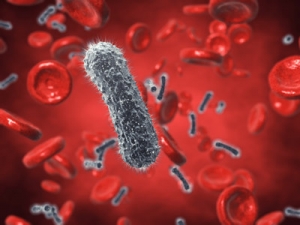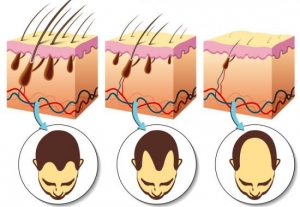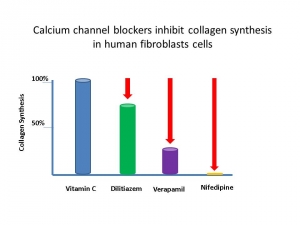Elijah Artman
Everyone is exposed to a variety of infectious agents in the environment such as bacteria, viruses, and parasites. Any seasonal change challenges our immune system with new pathogens. This year - even before the start of the flu season - the World Health Organization has declared Zika virus infections an international public health emergency. The Zika virus is not a new virus and is similar to other viruses transmitted by mosquitoes such as West Nile virus, dengue, yellow fever, and Japanese encephalitis. The symptoms of Zika virus infection are similar to normal flu symptoms. They include fever, headache, muscle and joint pain, rash and conjunctivitis. Often there are no symptoms, and in most cases people are not aware that they are infected while they are spreading the virus. Currently, mosquito control is the only way for prevention from Zika infection and there are no treatments available. Therefore, it would be prudent to understand how to support our body’s immune system and protect it against Zika or other viral and infectious pathogens.
Vitamin C is a vital nutrient for human health and survival. It is not only a powerful antioxidant and immune booster, but it also supports collagen connective tissue formation and builds extracellular matrix, which is the “glue” that binds the body’s cells together. It is important for faster wound healing and prevention of various chronic conditions. Optimum amounts of vitamin C effectively protect the body and cardiovascular system against biological rusting. Additionally, there are several other important functions of vitamin C. It is a cofactor for a series of biological enzymes, which are important for the improved metabolism of cholesterol, triglycerides and other risk factors of heart disease. It is an important energy molecule needed to recharge energy carriers inside the cells. Vitamin C is essential for production of carnitine, the molecule that carries fatty acids into the mitochondria for energy production. It participates in biological recycling of vitamin E, glutathione and many other cell protective molecules, and when taken together with calcium, it increases calcium absorption. Vitamin C neutralizes various toxins in the body, and protects healthy cells from harmful substances and the effects of many pharmaceutical drugs.
In the last Health Science News Page, we elaborated on the important role of lipoprotein (a), or Lp (a), acting as a surrogate for vitamin C. Lp (a) is a sticky molecule that contains a large protein chain called apolipoprotein(a) or apo(a) attached to a molecule of low-density lipoprotein (LDL). As such, the Lp (a) helps in transporting cholesterol and triglycerides in the body. In addition, the presence of apo(a) gives this molecule other distinct features such as its ability to “stick” to collagen and other structural proteins and to facilitate blood clotting. Lp (a) is found only in humans and animals that do not produce their own vitamin C, and its appearance in human metabolism coincides with a loss of vitamin C production in the ancestors of man. Today, the only reasonable explanation for these events remains Dr. Rath’s discovery that Lp (a) is a functional substitute for vitamin C as a temporary “repair factor” for damaged blood vessels caused by chronic deficiency of vitamin C.
Cancer is the second leading cause of death worldwide. The World Health Organization’s International Agency for Cancer Research has projected that as the life expectancy increases, cancer diagnosis will increase by 75%-90% by the year 2030. While enormous amounts of money are being spent on cancer research, there is still no cure in sight. This is because the cancer research establishment largely cultivates already tried conventional approaches and has become reluctant to trying and embracing new concepts and innovative thinking.
Although in our society it has gained cosmetic importance, hair on the head and entire body is one of the distinguishing characteristics of mammals. The main function of hair is to regulate body temperature by facilitating evaporation of sweat in hot weather and to create additional insulation by closing the skin pores in cold weather. Despite its important function, the hair shaft itself is not living tissue. Tiny blood vessels at the base of every hair follicle feed the hair root to keep it growing. Yet, the hair we see on the body contains only dead cells. As the new cells grow at the base of the hair follicle, the older cells die and are forced along the follicle towards the scalp. It is normal to shed approximately 100 to 150 hairs a day. Hair is made of a protein called keratin, and hair color is determined by the presence of melanin secreted by pigment cells. As we age, these pigment cells die and the hair turns gray.
The drugs intended to reduce blood pressure, correct arrhythmias and some forms of heart disease are the most commonly prescribed drugs in the US. One in every three adults, or approximately 75 million people, is diagnosed with high blood pressure in the US and many more have pre-hypertension. About 15 million people have some form of irregular heartbeats or arrhythmias. The most commonly prescribed drugs to treat these and other conditions are the so called “channel-blockers” or “agonists” which include calcium, sodium and potassium channel blockers. Worldwide sales of these drugs have reached $6 billion. In the United States, calcium channel blockers are the eighth largest drug class in prescription sales.
The global supplement market is $82 billion, and the US supplement industry contributes $37 billion to that number. Consumers spend billions on dietary supplements trusting in their beneficial effects. Faced with countless options and a worldwide market, choosing supplements can be overwhelming. Rarely are consumers supplied with sufficient scientific information to base their decisions on and usually they only have a company’s marketing materials. Dr. Rath Research Institute conducts academic research in the area of natural health and provides a scientific basis for the development of unique synergy based micronutrient combinations.
Although a balanced diet is one of the best ways to obtain nourishment for everyone, the majority of children are not getting enough micronutrients from the food they eat. Too few fresh fruits and vegetables and consumption of highly processed food results in chronic deficiency of essential micronutrients in children impairing their growth and health and making them prone to diseases. Malnutrition in children is a problem not only in developing countries. In their quest for massive food production, the developed countries have indiscriminately used pesticides and chemical fertilizers and other poor farming practices which has led to severe depletion of nutrients in the soil. In addition, micronutrient deficiencies are widespread due to the global promotion of highly processed food. A study published in 2004 in the Journal of American College of Nutrition confirms a significant decline in the nutritive value of food produced in the last 50 years.
Sarcomas are cancers of connective tissue such as hard tissue (bones), soft tissue (muscles) and tendons. Although sarcomas are uncommon at any age, they are relatively frequent in children. Every year in the USA approximately 1500-1700 children and young people under the age of 20 are diagnosed with bone and soft tissue sarcomas. Sarcomas are one of the most life-threatening cancers in children, and survival ranges from 59%-68% depending on factors such as age, other risks (i.e., tumor location, gender, environment, genetics), prescription medications and other drugs, etc.
A synergistic combination of micronutrients comprised of various vitamins and minerals is essential for survival and maintaining optimal health. Vitamins are organic substances produced by plants or animals, while minerals are inorganic elements present in the soil and water and are absorbed by plants. The main source of minerals for humans is through the plants we eat. However, a study published in 2004 in the Journal of the American College of Nutrition concluded that in the past fifty years there has been significant decline in the nutritional content of vegetables and fruits with regards to the amount of vitamins C and B2, protein, calcium, iron, and phosphorus. Based on their results, the authors estimated that there would likely have been similar declines in other nutrients as well, such as magnesium, zinc, and vitamins B6 and E. Aggressive farming practices, and the abundant use of chemical fertilizers, pesticides, and other harmful chemicals are the main reason for the nutritional decline. It is claimed that today one would have to eat eight oranges to derive the same amount of Vitamin A as our grandparents would have obtained from one.









